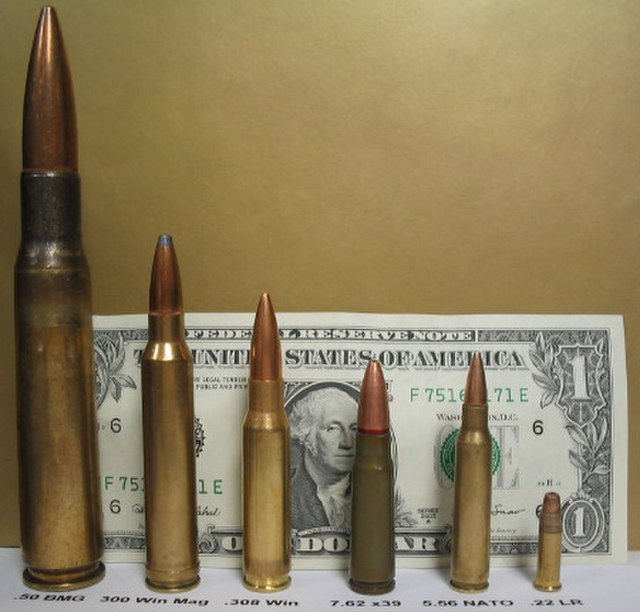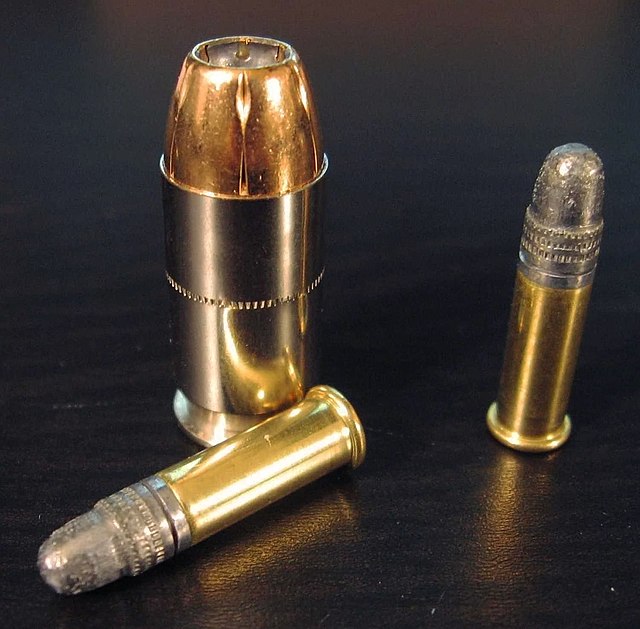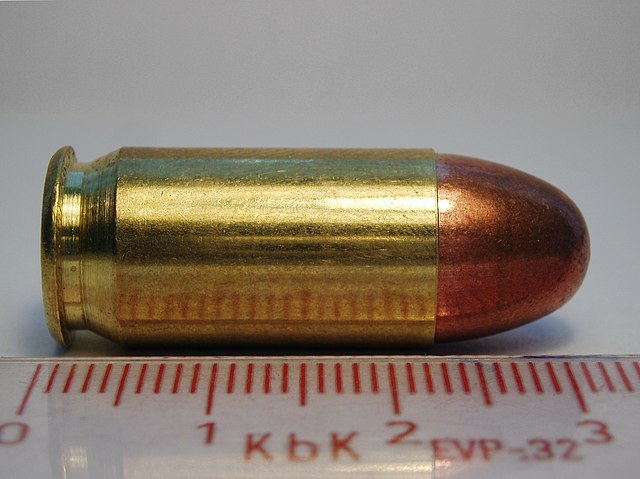The .22-250 Remington is a very high-velocity, short action, .22 caliber rifle cartridge primarily used for varmint hunting and small game hunting. It is capable of reaching over 4,000 feet per second. It does find occasional use by women and young children for deer hunting because of its low recoil. Some jurisdictions prohibit the use of cartridges smaller than 6 mm for deer hunting. This cartridge is also sometimes known as the .22 Varminter or the .22 Wotkyns Original Swift. Along with the .220 Swift, the .22-250 was one of the high-velocity .22 caliber cartridges that developed a reputation for remote wounding effects known as hydrostatic shock in the late 1930s and early 1940s.
.22-250 Remington
In guns, particularly firearms, but not artillery, where a different definition may apply, caliber is the specified nominal internal diameter of the gun barrel bore – regardless of how or where the bore is measured and whether the finished bore matches that specification. It is measured in inches or in millimeters. In the United States it is expressed in hundredths of an inch; in the United Kingdom in thousandths; and elsewhere in millimeters. For example, a US "45 caliber" firearm has a barrel diameter of roughly 0.45 inches (11.43mm). Barrel diameters can also be expressed using metric dimensions. For example, a "9 mm pistol" has a barrel diameter of about 9 millimeters. Since metric and US customary units do not convert evenly at this scale, metric conversions of caliber measured in decimal inches are typically approximations of the precise specifications in non-metric units, and vice versa.

Rifle cartridges: from left: 50 BMG • 300 Win Mag • 308 Winchester, 7.62 × 39 mm • 5.56 × 45 mm NATO • 22 LR
A 45 ACP hollowpoint (Federal HST) with two 22 LR cartridges for comparison
Side view of a Sellier & Bellot 45-cal ACP cartridge with a metric ruler for scale




